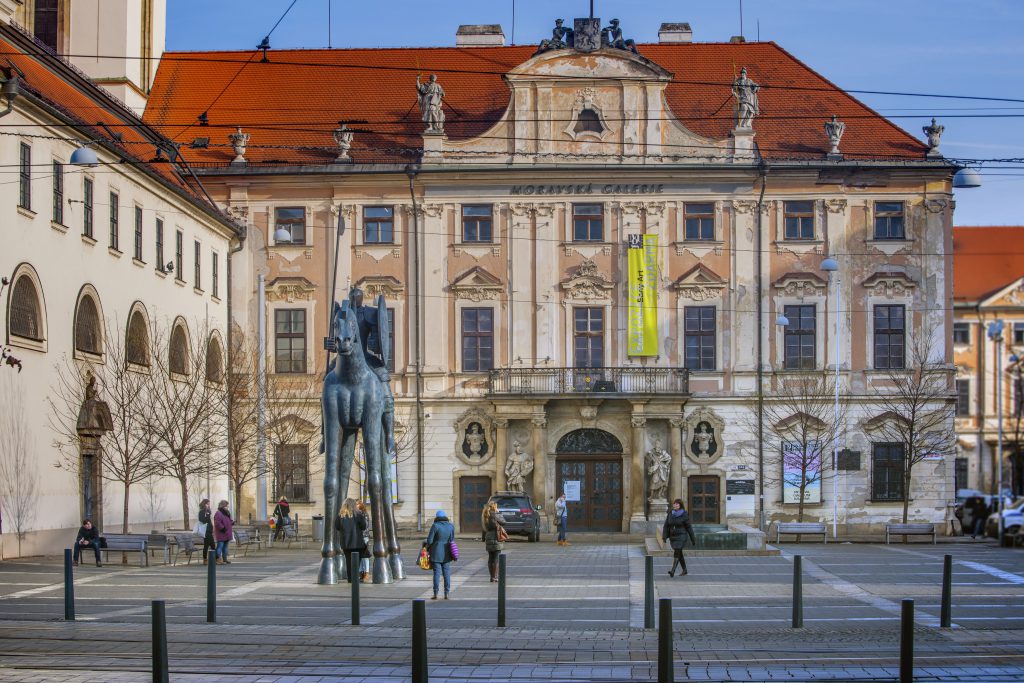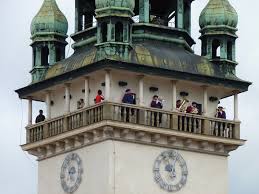On the saints and gorgons of Brno

If you want to spend a quiet winter’s afternoon looking at a small, but beautiful art collection from the Gothic period to the 19th century, go to Moravian Gallery at the Governor’s Palace in Moravské náměstí 1a. OK, maybe it’s not the Louvre or the Albertina, but you still enjoy going to a good restaurant, don’t you, even if it’s not Michelin rated?
The collection is housed in one of the most beautiful baroque buildings in Brno. It started life as an Augustinian monastery in 1350, outside the protection of the town walls. It was damaged in the religious wars of the 17th century, in particular, during the siege of Brno by the Swedes, and then re-built.
In the 1780s, the Habsburg Emperor Joseph II forced the friars to move out, to the Abbey at Mendlovo náměstí, apparently because he liked their well-located and representative buildings. The various parts of the monastery buildings then became the governor’s office, a grammar school, a university, state administrative buildings and finally the Museum of the Workers’ Movement during Communism.
The temporary exhibitions are on the ground floor with the permanent exhibition on the first floor. Get tickets at the museum shop on the right (there is a free entry to the permanent exhibition). Here are a few highlights to spark your curiosity.
At the end of the medieval collection there is a wooden sculpture of St Peter Martyr, a 13th-century Italian Catholic priest who served as Inquisitor in Lombardy (and therefore was probably not a very nice person). He was killed by an assassin and was canonized as a Catholic saint 11 months after his death making this the fastest canonization in history. The sculptor was Antonín Pilgram, born around 1460, probably in Brno or close by. He is renowned for the portal of the Old Town hall and the pulpit in St Stephen’s Cathedral in Vienna – so while he is no Michelangelo, he is definitely somebody!
In the first room after the corridor, there is a painting of the Head of Medusa by Peter Paul Rubens. Remember the story? There are many versions but in most Medusa was one of three beautiful sisters, the gorgons. Neptune fell in love with her but she rejected his advances so he turned all three sisters into terrible monsters with hissing snakes for hair. Medusa kept her beautiful face, however anyone who looked at her turned into stone.
Perseus was a nice young man who was very protective of his mother. He was tasked by a not-so-nice king, who wanted him out of the way so he could court Perseus’s mother, to bring him Medusa’s head. With gifts from the Gods including a mirrored shield that allowed him to see a reflection of Medusa’s face and so avoid being turned into stone, he decapitated her. Rubens captured Medusa’s magical ability in such a striking manner that, when first exhibited, screens protected women and children from the fearful image. It truly is a remarkable painting.
Browse through the other galleries where there are interesting Baroque paintings and sculptures. In the last room of the exhibition where Napoleon slept before the Battle of Austerlitz you will find a large painting, Bemused, by Wilhelm Bernatzik. Bernatzik was an Austrian painter who studied in Vienna, Düsseldorf and Paris, where he was influenced by the impressionists, before finally returning home to Vienna. He was one of the founding members of the Vienna Secession but in 1905 he left the Secession to join the so-called Klimt group. Bemused, painted in 1898, is a beguiling painting that lives up to its title.
So that’s the Governor’s Palace! I recommend you spend a few hours there. Afterwards you can have a beer, or glass of wine, in Café Morgal where you can lie back and gaze at the ceiling frescoes discovered during the renovation while you reflect on the Art you have seen.



